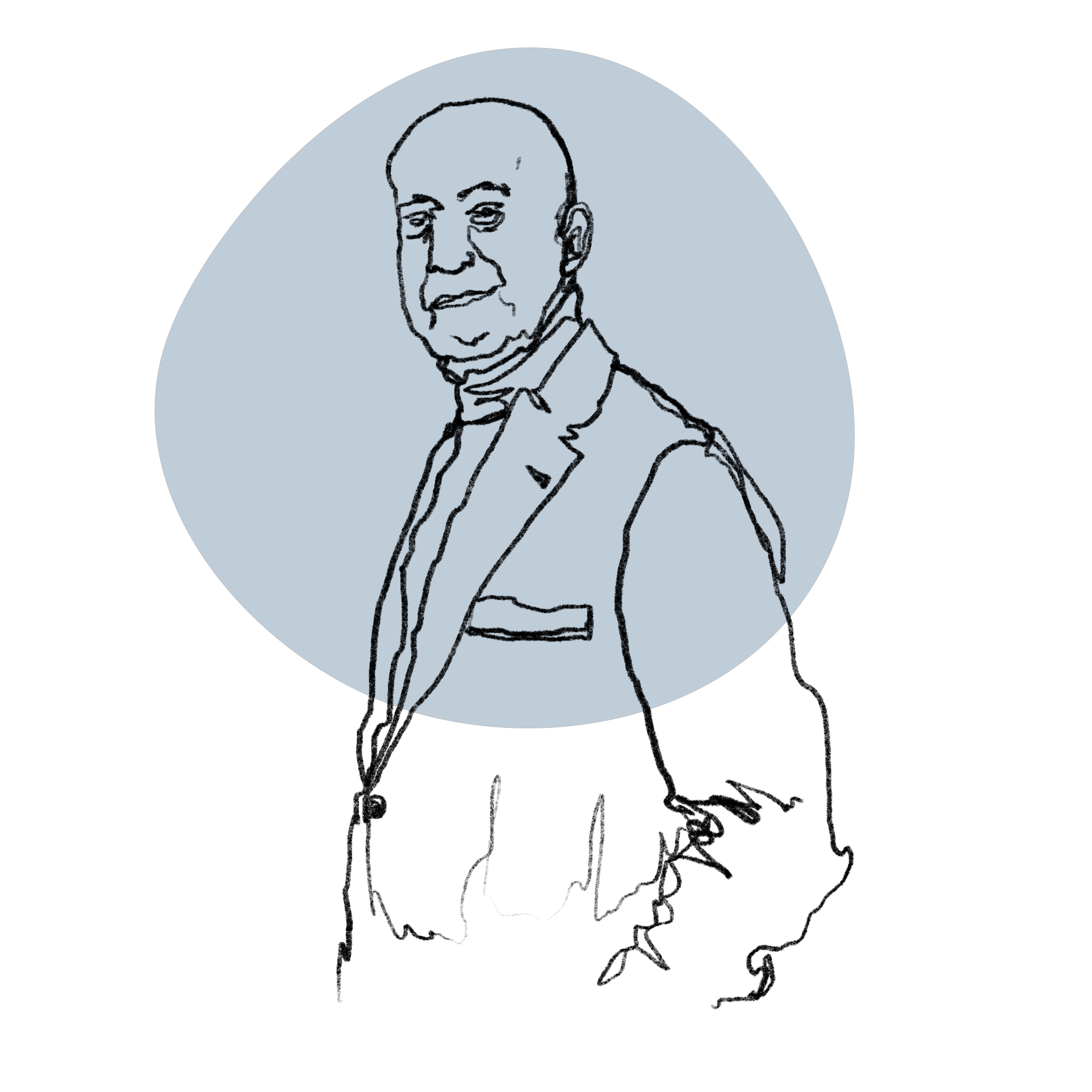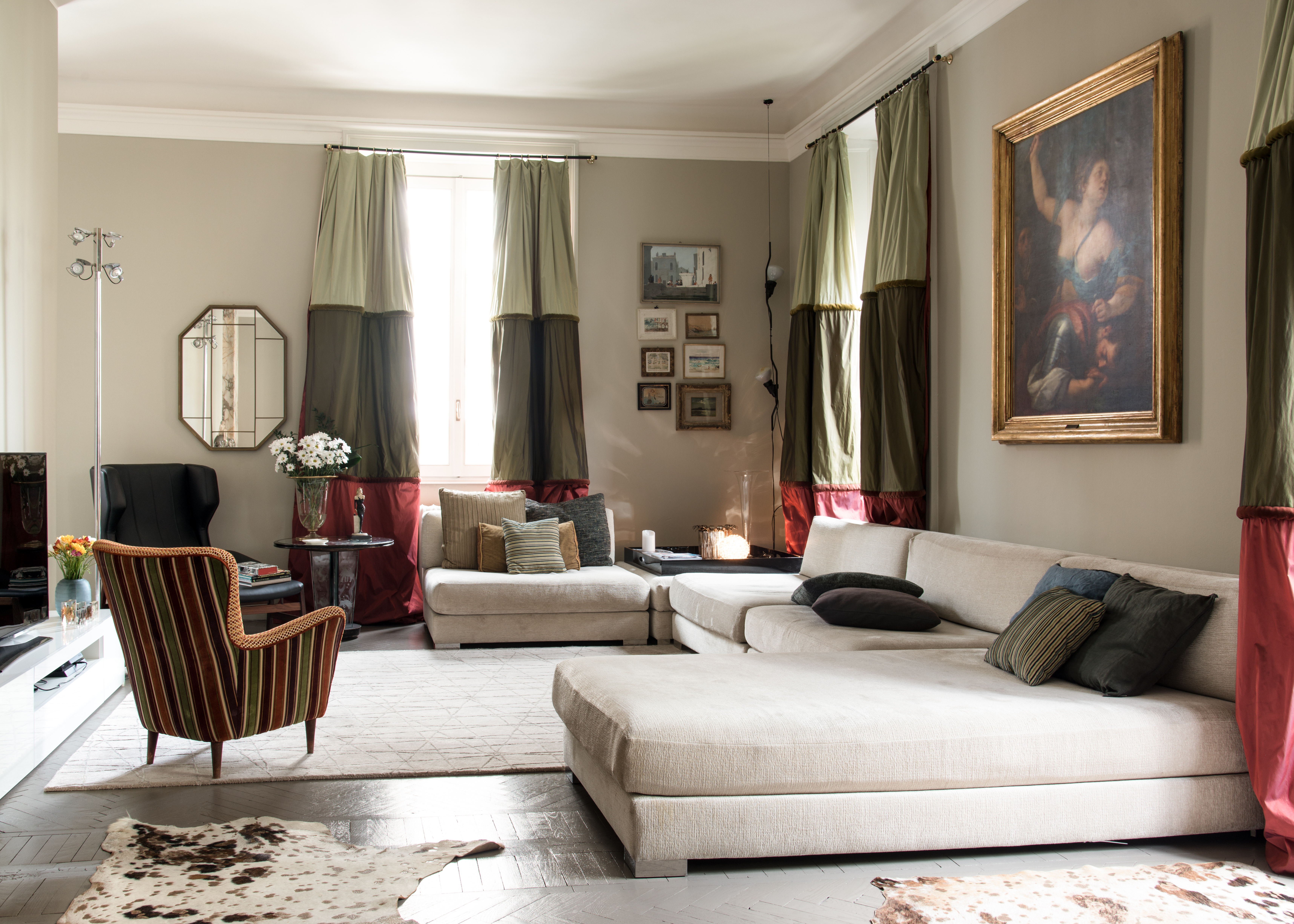Whether they appear on a fabric, on a wallpaper or on a tiled wall, geometric patterns act as an ideal background for vintage-inspired furnishings, first of all because they represent a quick solution to solve and renew a space, in order to change its perception by avoiding structural and expensive works. Moreover, compared to a classic white wall decorated with paintings, wallpapers add a unitary, intimate and welcoming effect to the home décor, especially if they recall the simple and clean motifs of the wall coverings made in the '50s. For those looking for a glam touch, the '20s and '30s Art Déco stripes, circles, rays or zigzag shapes are usually an inspiration, and so are the '60s optical motifs, similar in style to those appearing on wallpapers decorating the sets of the TV series "Mad Men".
Revisited in a contemporary key, these patterns are still very fashionable, coming into harmony with the different rooms of the house: in the dining room, a patterned wall can dialogue with the warm wood tones of a '50s sideboard, whereas in the living area, contemporary geometric fabrics are used to cover vintage armchairs and sofas, refreshing their look while maintaining their comfortable style. Even in the bathroom and kitchen, wallpaper is now a must (in its waterproof and washable high-tech versions), combined with retro wooden furniture, pastel-colored appliances, tools and ceramics decorated with geometrical motifs.
And speaking of ceramics, recycled cement tiles are back in fashion from flea markets: their optical and geometric effects emphasize floors and wall coverings, and the most sought-after are the square and hexagonal versions, typical of the first half of the 20th century. Adorned with floral and geometric designs, these tiles can give life to interesting geometric compositions and combinations of colors, which mix easily with different styles of furniture, even the most contemporary.
Among the Italian 20th century masters of design, Gio Ponti stands out as a pioneer of the use of geometrical patterns in interiors: his blue and white motifs conceived for the Hotel Parco dei Principi in Sorrento (designed in 1960 and still active) are similar to those he used in the villas he designed in Caracas and Theran (previously mentioned on intOndo), and anticipated contemporary décor by a great deal. In addition to the lobby, bar and restaurant, each room of the hotel shows a different composition of white and blue tiles decorated with geometric or naturalistic motifs, formerly complemented by spherical patterned curtains produced by the Busto Arstizio JSA factory.
Another timeless classic is the contrast between white and black patterns, experimented by the most sophisticated designers of the '50s on wardrobe panels, screens and table tops, influenced by the great success of Piero Fornasetti's printed furniture. Vintage furniture material itself can often draw interesting geometries, as seen for example in many refined pieces designed by Vittorio Dassi, which look dynamic and vibrant thanks to the herringbone patterns traced by rosewood.
Among the most characteristic geometric patterns is the grid pattern, launched in Italy by the "Quaderna" series furniture, designed by Florentine group Superstudio in the '70s and still produced by Zanotta. Recently used as an inspiration for wallpapers as well as table and bedroom fabrics, this pattern's effect is dynamic but still minimal; but mix it with a brightly colored Memphis Group piece, and you'll obtain lively and pop chromatic contrasts. A visit to the Remo Brindisi Museum in Lido Spina (Ferrara) is a must: designed by Nanda Vigo in 1973, the museum interior is decorated with a repeated grid pattern from the floor to the ceiling.






.png)






